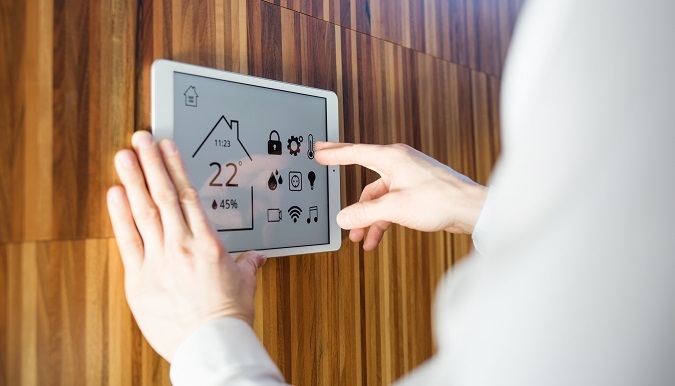
 Data Structure
Data Structure Networking
Networking RDBMS
RDBMS Operating System
Operating System Java
Java MS Excel
MS Excel iOS
iOS HTML
HTML CSS
CSS Android
Android Python
Python C Programming
C Programming C++
C++ C#
C# MongoDB
MongoDB MySQL
MySQL Javascript
Javascript PHP
PHP
- Selected Reading
- UPSC IAS Exams Notes
- Developer's Best Practices
- Questions and Answers
- Effective Resume Writing
- HR Interview Questions
- Computer Glossary
- Who is Who
What is the full form of DAC?
Introduction
Digital Addressable Controller (DAC) main objective is to make it possible to precisely manage and automate equipment for use in a variety of applications, including lighting control systems, building automation, business operations, and more.

The DAC enables targeted and customised management, monitoring, and configuration of the linked devices by allocating digital addresses to each one. In actuality, lighting control systems frequently employ DACs to give unique addresses to light fixtures or lighting control modules. This enables energy economy and personalised lighting scenarios by offering fine-grained control over each light source, including dimming, colour modification, and scheduling.
Working of DAC
To assign and control digital addresses inside a network or system, a Digital Addressable Controller (DAC) must perform a number of processes. Here is a Here's a general overview of how a DAC operates
Address Assignment The DAC has a system in place to give each device in its network a special digital address. An administrator can perform this manually, or it can be done automatically via a discovery process. To assign addresses to connected devices automatically, the DAC may employ proprietary methods or standards like DHCP (Dynamic Host Configuration Protocol).
Address Management The DAC keeps track of the allotted addresses and the accompanying devices after the addresses have been assigned. For later use and management, this data is kept in its memory or a linked database.
Communication and Control The DAC serves as a focal point for device connectivity. It connects to each device using the specified addresses and supports a number of different communication formats, including Ethernet, USB, RS-485, Wi-Fi, and Zigbee.
Command Processing A central control system or user interface sends commands or instructions to the DAC. These instructions might be for data retrieval, device management, configuration modifications, or status inquiries. Based on the devices' given addresses, the DAC decodes the commands and sends them to the appropriate ones.
Device Control The DAC uses the digital addresses of the different devices to deliver control signals to them. For instance, the DAC in a lighting control system can transmit instructions to certain light fixtures to change their brightness, colour, or switch on or off.
Applications of DAC
Digital Addressable Controllers (DACs) are used in a variety of fields where centralised device administration and control are necessary. Some common applications of DACs include
Lighting Control Systems DACs are widely utilised in outdoor lighting, indoor lighting, and commercial lighting control systems. They make it possible to give a specific address to each light fixture, giving users fine-grained control over brightness, colour, scheduling, and energy management.
Building Automation In building automation systems, where they issue addresses to equipment including HVAC systems, access control systems, security systems, elevators, and more, DACs play a significant role. This makes it possible for these devices to be controlled, monitored, and automated centrally, enhancing building management, security, and energy efficiency.
Industrial Automation DACs are used to manage and control numerous equipment and procedures in industrial environments. In order to enable centralised control, data collection, and process automation, they give addresses to sensors, actuators, motors, and other pieces of machinery.
Smart Home Systems DACs are used in smart home systems to connect and manage linked devices including smart appliances, door locks, thermostats, and lighting. The DAC enables centralised management and automation by allocating addresses to various devices, enabling customers to operate their homes remotely or with voice commands.
Energy Management Systems To monitor and manage energy use in buildings, industries, or power distribution networks, energy management systems use DACs. They provide energy metres, sub-meters, and other energy monitoring equipment addresses, facilitating data collection, analysis, and energy consumption optimization.
Advantages of Digital Addressable Controllers (DACs)
Centralised Control DACs offer a centralised platform for managing and controlling the devices that are part of a system or network. This streamlines the entire control process and makes it possible to handle linked devices effectively.
Individual Device Control Each device is given a distinct digital address by DACs, allowing for fine control and personalization at the device level. This level of specificity enables focused automation and control, improving flexibility and user experience.
Automation and Efficiency By facilitating planned activities, event-triggered actions, and system interaction, DACs make automation possible. This results in increased energy efficiency, enhanced workflow, and simplified operations.
Scalability Scalability provided by DACs makes it simple to add or remove devices without performing extensive reconfiguration. New devices may be given addresses and easily included into the current network as the system grows.
Monitoring and Diagnostics DACs offer monitoring features that let users keep an eye on the performance, diagnostics, and condition of their devices. This facilitates preventative maintenance, problem-solving, and the early detection of possible problems.
Disadvantages of Digital Addressable Controllers (DACs)
Complexity DAC implementation and configuration can be challenging, requiring technical know-how and effective system integration. It might be difficult to set up the network, allocate addresses, and guarantee device compatibility.
Initial Cost Due to the requirement for specialised hardware and software components, DACs may have greater upfront costs. Depending on the system's complexity and size, the price may change.
Dependency on Communication Network Communication networks are necessary for the correct operation of DACs. The control and communication between devices can be impacted by network failures or disturbances, which can damage system performance as a whole.

Single Point of Failure In rare circumstances, losing control over the linked devices may result from a DAC failure or malfunction. To reduce such hazards, redundancy and backup procedures should be in place.
Limited Compatibility The interoperability of DACs with various devices or protocols may be constrained. In order for the DAC to seamlessly integrate with the system's components, it is crucial to confirm that it supports the necessary communication standards and protocols.
Conclusion
Hardware elements and software interfaces make up DACs in most cases. Controllers, processors, memory, and communication interfaces including Ethernet, USB, and wireless connections are examples of possible hardware components. To set up and administer the digital addresses allocated to devices, the software component offers the essential tools and interfaces. A DAC, for instance, can give unique addresses to each lightbulb or lighting control module in lighting management systems. This makes it possible to precisely manage and tailor the lighting, colour, and other aspects for certain rooms or zones inside a structure.
FAQs
Q1. What are the key functions of a Digital Addressable Controller?
Ans: A DAC's primary responsibilities include providing devices with distinctive digital addresses, allowing device connection and control, gathering and monitoring data, and supporting automation and customisation.
Q2. How does a DAC assign digital addresses to devices?
Ans: ADACs allow administrators to manually issue digital addresses or to do so automatically through a discovery process utilising protocols like DHCP. The addresses are distinctive identifiers that provide communication and control between individual devices.
Q3. How do DACs enhance building automation systems?
Ans: Access control, security, and other building automation systems are just a few examples of the devices that DACs provide addresses to.

